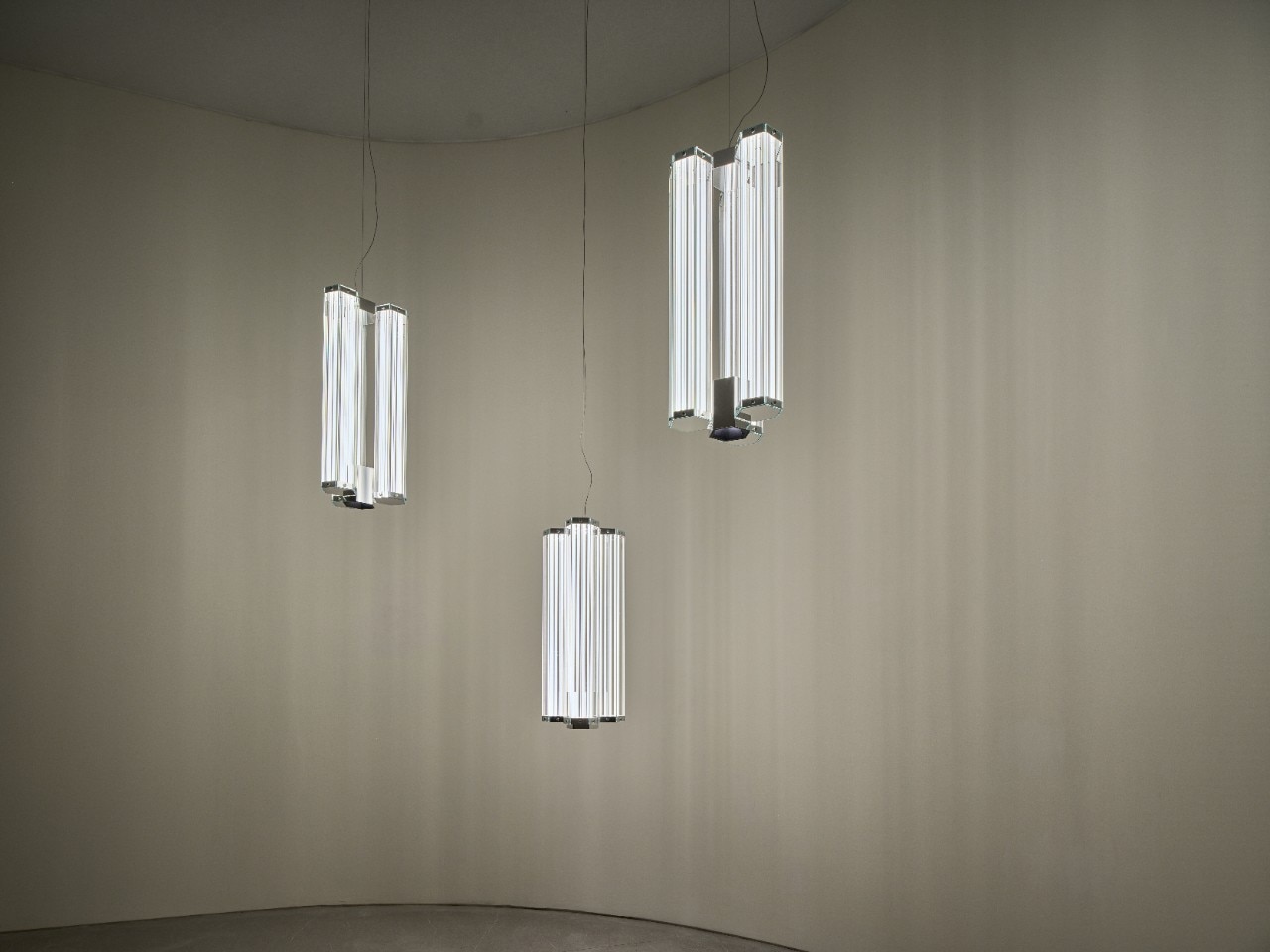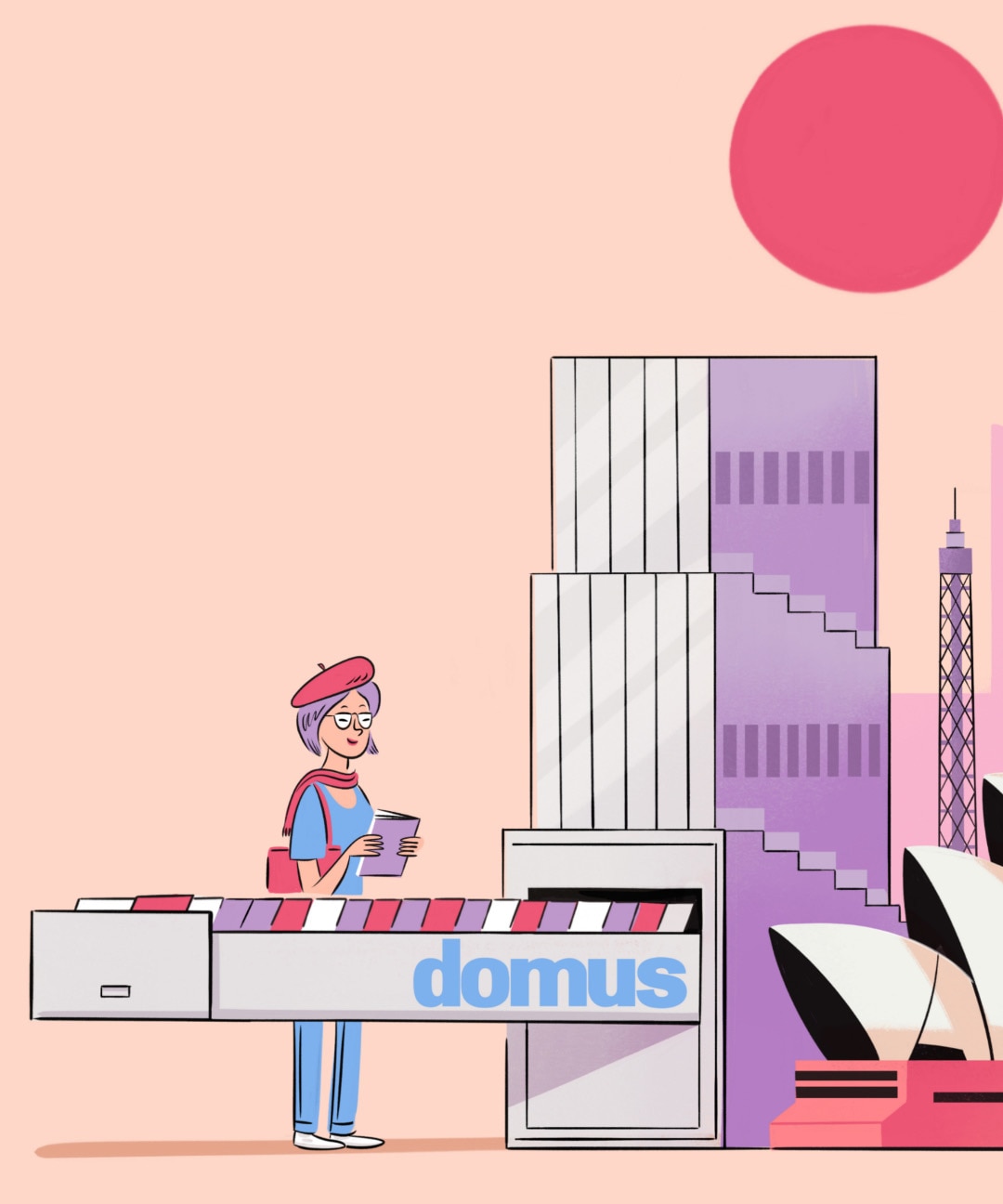Amid the whirlwind of events, installations, and parties, Design Week also offers a meeting point for the more adventurous at the Fiera di Milano. The Salone del Mobile, far from being forgotten or overshadowed by the Fuorisalone’s counter-proposal, has evolved in recent years, strengthening its business-oriented focus. It remains an unmissable stop for design professionals, companies, and anyone eager to experience products up close.
This year, Euroluce, the International Lighting Exhibition, returns as part of the Salone del Mobile’s program. Since 1976, it has been a reference point for the sector, showcasing the evolution of light in domestic spaces. Light is one of the most complex design themes, explored in countless possibilities and still endlessly available for exploration. While much of what we encountered at the fair seemed more like a tribute to the past than a truly groundbreaking proposal, it remains fertile ground for designers to find the balance between technology, function, poetry, form, and materials, constantly producing new and incredibly interesting results.
At Domus, we’ve spoken with designers, observed their lamps, and experimented with new ways of switching light on and off, going beyond the binary on-off logic and exploring everything that exists in between. Here, we’ve narrowed down the five essential stops to make at Euroluce, featuring both iconic brands and emerging companies.
1. Grau, Campfire, Grau
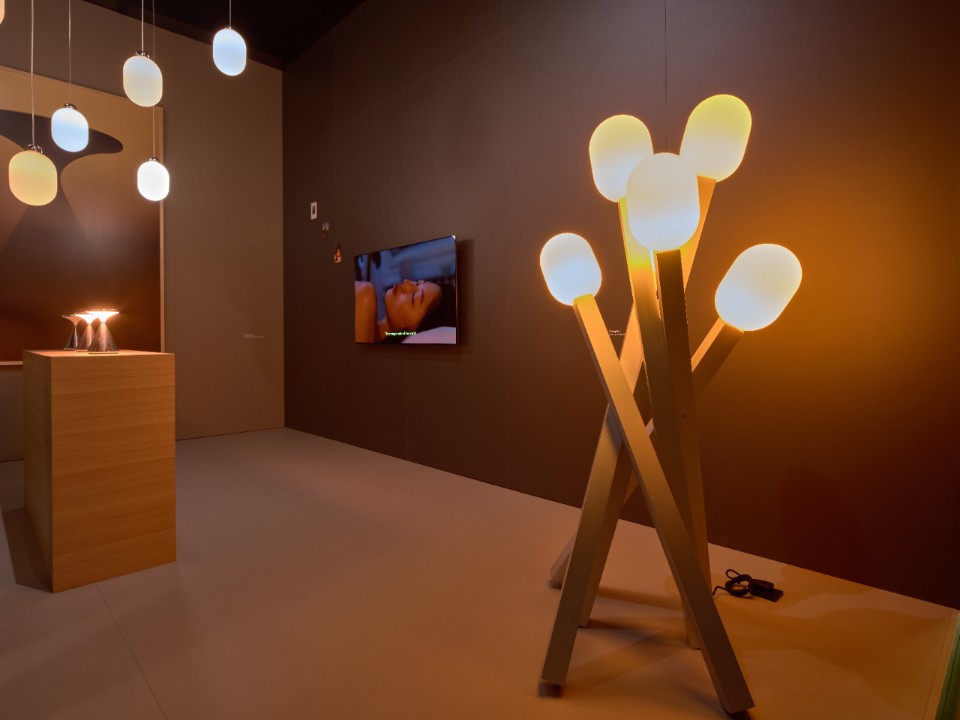
It might sound cliché, but for Grau, the secret to designing light is starting with light itself. For the Hamburg-based brand, the design process always begins much earlier than the final product. “Inspiration always comes from nature and the archetypes it has created,” they tell Domus as we chat around Campfire, which was an installation last year and is now a scaled-down floor lamp inspired by the campfire and the ancient act of gathering around it. The light it emits is dynamic, gradually changing in intensity and temperature according to a rhythm composed by the designers "as if it were a piece of music".
2. Davide Groppi, Race of Lights, Davide Groppi
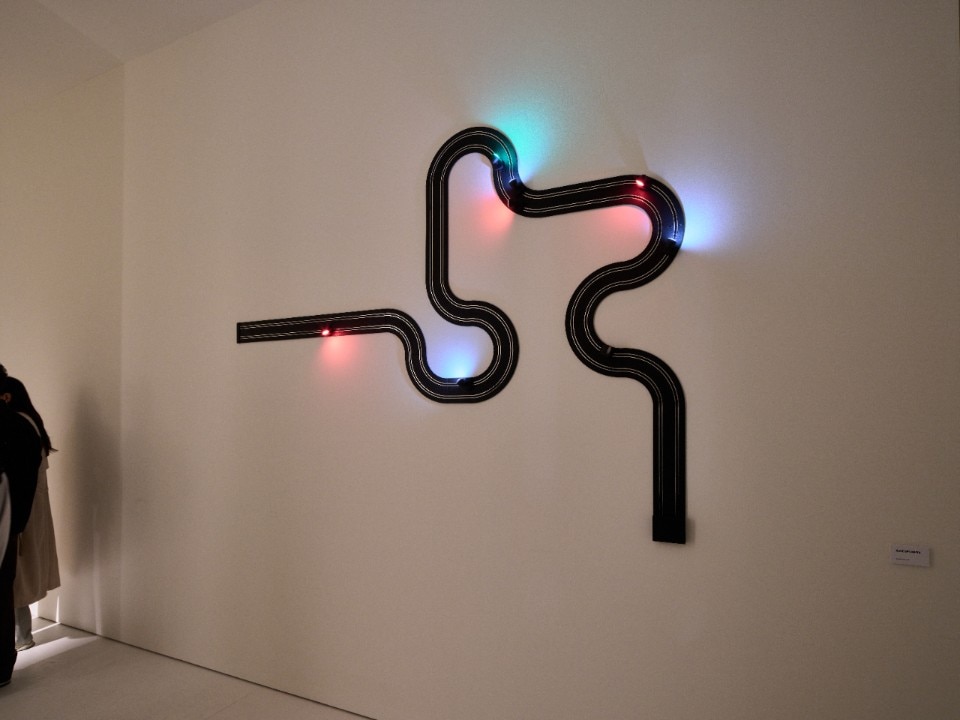
The installation is conceived with a museological approach to appreciate the graphic quality of the lamps designed by this capital-I innovator. Alongside pieces whose beauty and value are now widely recognized, it is impossible to remain indifferent to one of the new pieces; although Groppi has been challenging us for some time with new gestures, we are not yet used to "using" a lamp as we do in Race of Lights: a track of colourful toy cars that can be slid along the tracks, detached or attached, in an ironic and super-pop interaction.
3. Formafantasma, SuperWire, Flos
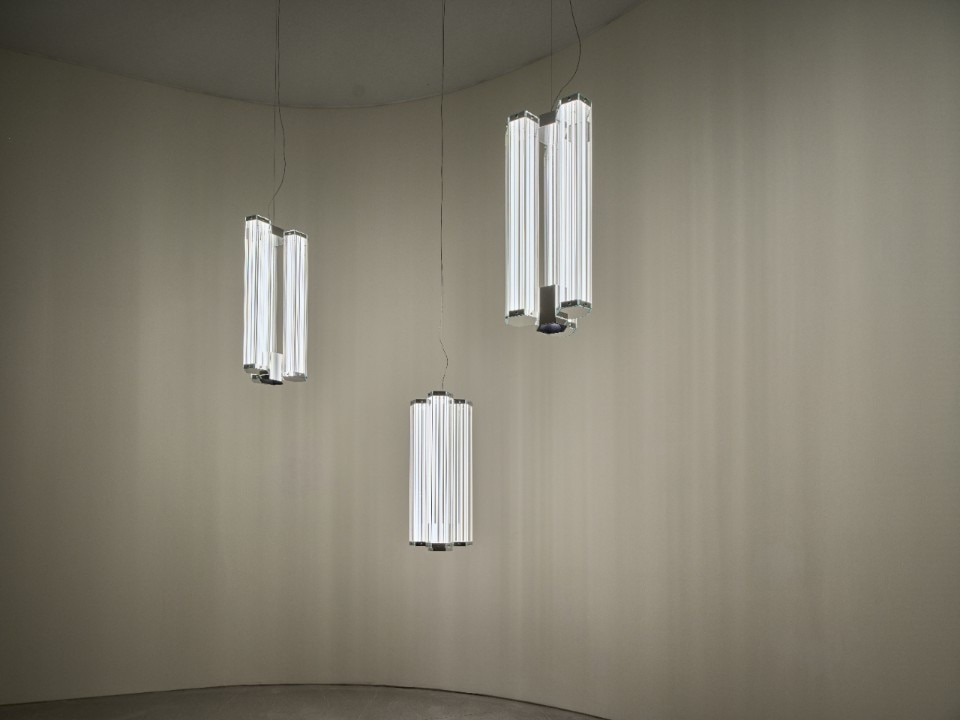
In the large space designed by the Formafantasma duo - who also created a site-specific installation for Flos in the Corso Monforte showroom - each room is dedicated to a designer, in a sequence that includes the biggest names in design (Konstantin Grcic, Erwan Bouroullec, Tobia Scarpa, to name but a few). The last room houses SuperWire, a beautiful lamp available in floor, table and pendant versions. The object encases LED filaments in a hexagonal glass and metal structure that the designers, Formafantasma, have researched and experimented with. The floor version is supported by a tripod, a clear homage to the Luminator designed by Achille e Pier Giacomo Castiglioni.
4. Bjarke Ingels, Arctic, Artemide
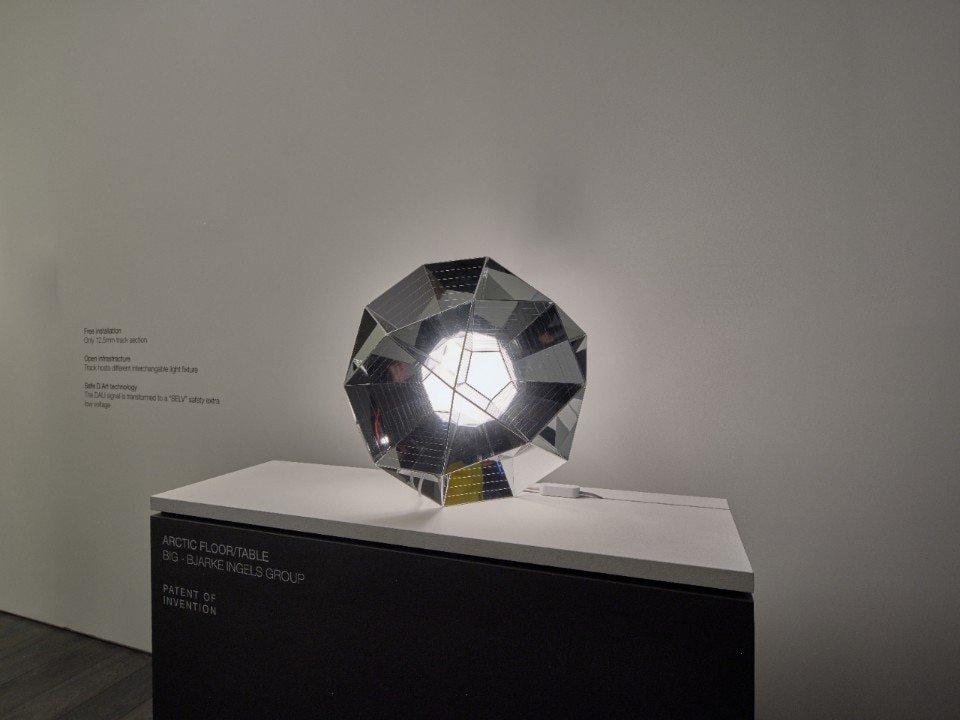
In the “Architectural” and “Design Collection” areas, which define Artemide’s entire production, the company presented new versions of some existing products, updated with new finishes, sizes, or technologies, as well as brand-new lamps set to launch in the coming months. These include Arctic, designed by Bjarke Ingels, a lamp with a complex structure made up of a multitude of surfaces that reflect and filter light, creating a dialogue between natural light and the artificial light generated by the central source. Available in a transparent or mirrored version, Arctic is characterised by a geometry inspired by an Archimedean solid with no external surfaces.
5. Victor Vasilev, Dancing Glass, Oluce
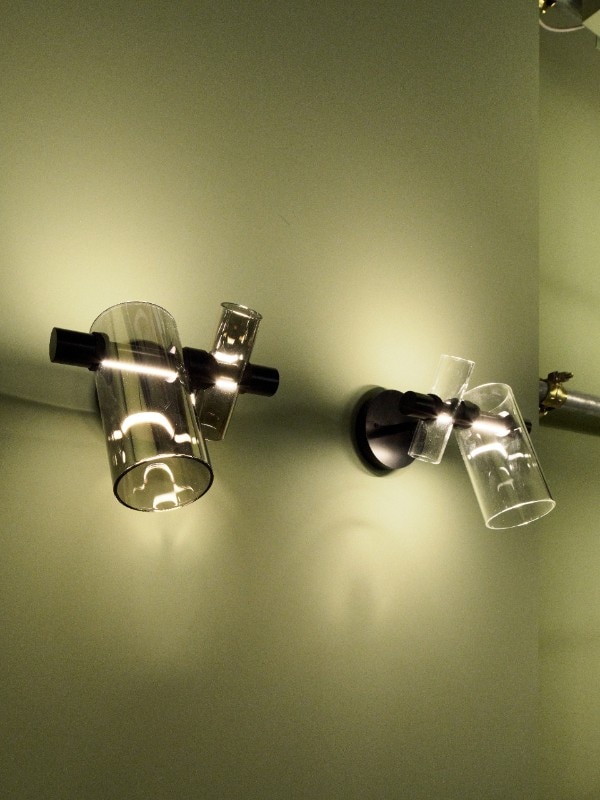
Another historic company long rooted in the culture of lighting design and Italian design, Oluce celebrates an important milestone this year – 80 years of innovation – commemorated by a book recounting the products and people who have helped to give light new forms and new ways to interact with it, most notably Joe Colombo, who treated lamps as “machines for lighting.”
The new entry, Dancing Glass, is introduced to Domus by Victor Vasilev, the designer behind it. Dancing Glass is a light bar that interrupts a sequence of glass cylinders, each rotating independently. The interaction between light and moving forms creates a choreography of shadows, transforming technology into poetry. A wall-mounted version of this suspended product will be introduced in 2025.

"The Wings", the triple-certified building of the future
The Wings is an innovative complex that combines futuristic design and sustainability. With BREEAM Excellent, WELL Gold, and DGNB Gold certifications, the building houses offices, a hotel, and common areas, utilizing advanced solutions such as AGC Stopray glass for energy efficiency.

